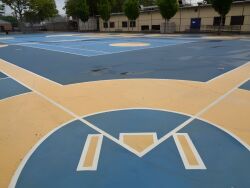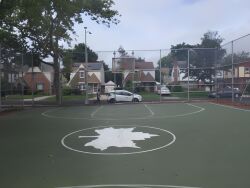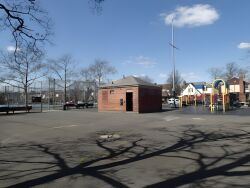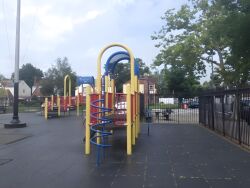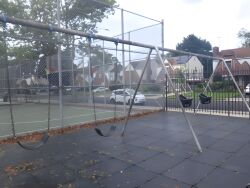East Springfield Playground
East Springfield Playground
What was here before?
This land was part of the territory inhabited by the Lenape. In 1656 Director General of the New Netherland colony, Peter Stuyvesant (1610-1672), issued a patent to the colonists for the land that would become known as Jamaica. Consisting largely of marshlands, forests, and farms, the area remained rural well into the 20th century.
By 1850, this parcel was part of Abraham A. Hendrickson’s farm where he lived with his wife and five children. Nickolas Krummenacker, a member of the German American farming community of Fosters Meadow, purchased a portion of the farm by 1891. It was then acquired in 1906 by Florence C. Smith, said to be “representing a syndicate,” and later owned by the Brooklyn real-estate broker Ernestus Gulick before ultimately being acquired in 1931 by Selective Homes Inc., which would develop the area.
Residents organized the Cambria Heights Civic Association of St. Albans in the mid-1930s to push for new or improved firehouses, schools, transportation, and mail service. By 1945, almost 5,000 new homes had been built in the area. After World War II (1939-1945), the neighborhood became a prosperous Black community that overcame the regular opposition and hostility of the era.
How did this site become a playground?
This property was acquired by the city in 1960 and has been jointly operated by the Department of Education and NYC Parks since its opening in 1964. The playground is used by students during the school day and is available to the public after school hours. The playground, originally known as the P.S. 147 Playground after the adjoining public school, was renamed East Springfield Playground in 1985.
The playground was updated in 1998, and in 2024 the entire site was redesigned. The main entrance was moved from the heavily trafficked 115th Road to 218th Street for safer site access. New play equipment and furnishings were installed. The colorful safety surfacing takes its inspiration from the play equipment’s hexagonal designs, which are also referenced in the textured concrete in the spray shower. The basketball court was enlarged and more intergenerational features, like seating, ping pong, and a pathway through the greenspace, were added.
Who is this playground named for?
This playground’s name is derived from nearby Springfield Boulevard, which references the area's system of natural ponds and creeks.
Check out your park's Vital Signs
Clean & Safe
Green & Resilient
Empowered & Engaged Users
Share your feedback or learn more about how this park is part of a
Vital Park System

